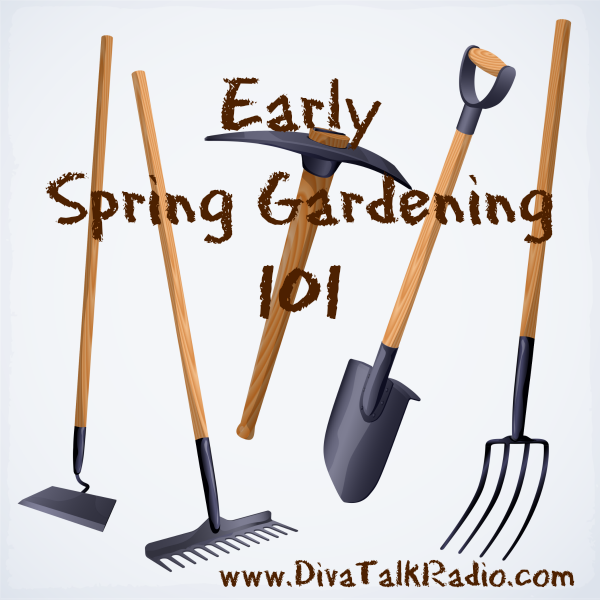 Few times of the year are more exhilarating than early spring. When you garden, it’s especially exciting. For those who are just getting started, it’s helpful to know some of the basic steps toward preparing your garden for the summer’s growth. Here are some ideas and suggestions on early spring gardening.
Few times of the year are more exhilarating than early spring. When you garden, it’s especially exciting. For those who are just getting started, it’s helpful to know some of the basic steps toward preparing your garden for the summer’s growth. Here are some ideas and suggestions on early spring gardening.
Is Your Soil Ready?
Gardening involves a lot of dirt – which is really properly called soil – and learning when to work your soil is important.
- Working your soil too early subjects it to clumping and hardening, as it is usually too wet from melting snow and the decreased sunlight of winter. Wet soil makes cement-like clumps that are tough to break up.
- Working your soil too late can also be problematic, as any organic matter or lime you’ve added won’t have time to settle in and decompose.
- Take a good handful of soil from your garden site, and give it a squeeze. If it stays in a lump with your finger indentations clearly visible, it’s far too wet. But if you can give the lump a tap and it falls apart easily, then it’s ready.
Dig!
Digging is one of those things that just must be done. There are various ways to do it, and as a general rule, deeper is better.
- Gas-powered tillers are one option. They churn up the earth with rotating blades. They do well with chopping up weeds but may not get deep enough.
- Digging forks look like short, thick pitchforks. They are the same size as a full-length spade, and the tines are usually around 8 to 12 inches long. You push this into the soil and step down on it like you would a spade, then twist and “pry” up the soil, poking apart any large lumps.
- Full-length spades work well, too; you use them the same as you would a digging fork.
- Hoes and hand-cultivators are good for chopping into the soil and prying up weeds, and they are also good at digging and aerating the soil.
Fertilize
It’s a good idea to work some lime and compost into your soil. If you are lucky enough to live near a farm or have your own manure-producers, and you have access to a well-aged manure pile, this is a great form of compost. You can also create your own compost with yard clippings and kitchen scraps. Just make sure it’s well-aged; raw compost may carry harmful bacteria and tends to “burn” young plants.
Weed Control
After the soil is first turned and the sun warms the soil, weeds will begin to take over. One of the easiest, earth-friendly ways to deal with this is to cover your garden with several layers of newspaper. Lay rocks or compost on the newspaper and then wet them thoroughly. When it’s time to plant, you can just make slits in the newspaper and insert seeds or seedling. Newspaper allows the soil to warm and “breathe,” unlike plastic and other weed-control covers.
If you don’t want to use newspapers, a thick layer of mulch will also help.
Learning the basic steps to gardening this spring will get you prepped for great summer’s growth–and after such a long winter, it’s revitalizing to get out, get some sun, and get your hands in the dirt!
We’d love to know how/what you’re doing in your early garden prep! Tell us in the comments.
That’s it for now. Until next time Divas, wear your heels well and Be Blessed!
P.S. Would you mind sharing this post with your friends? Please click on the social sharing buttons below. Thanks so much!




 Some of the links on this site are affiliate links. If you click on those links and make a purchase, Kelli Claypool will receive a small commission. This is greatly appreciated as all affiliate income is donated back into our community as part of our Mission 500 Project. Affiliate links contained within a post are noted accordingly.
Some of the links on this site are affiliate links. If you click on those links and make a purchase, Kelli Claypool will receive a small commission. This is greatly appreciated as all affiliate income is donated back into our community as part of our Mission 500 Project. Affiliate links contained within a post are noted accordingly. Please note that Kelli Claypool is not, nor are any of our guest bloggers, Interns, or contributing writers (unless otherwise noted within their bio) certified nutritionists, herbalists, counselors or doctors. Information shared on this website is from our own individual research and/or opinion and is for informational and entertainment purposes only. Please conduct your own diligent research as we cannot be held accountable for any undesirable outcome.
Please note that Kelli Claypool is not, nor are any of our guest bloggers, Interns, or contributing writers (unless otherwise noted within their bio) certified nutritionists, herbalists, counselors or doctors. Information shared on this website is from our own individual research and/or opinion and is for informational and entertainment purposes only. Please conduct your own diligent research as we cannot be held accountable for any undesirable outcome. Thank YOU for being here! Without our readers and loyal listeners, this website would be a very quiet place. Thank YOU for taking the time to read our posts, listen to our shows, and give us your encouraging feedback. Our goal is to support you, to love you, and to inspire you to live victoriously in all areas of your life.
Thank YOU for being here! Without our readers and loyal listeners, this website would be a very quiet place. Thank YOU for taking the time to read our posts, listen to our shows, and give us your encouraging feedback. Our goal is to support you, to love you, and to inspire you to live victoriously in all areas of your life.
Leave a Reply